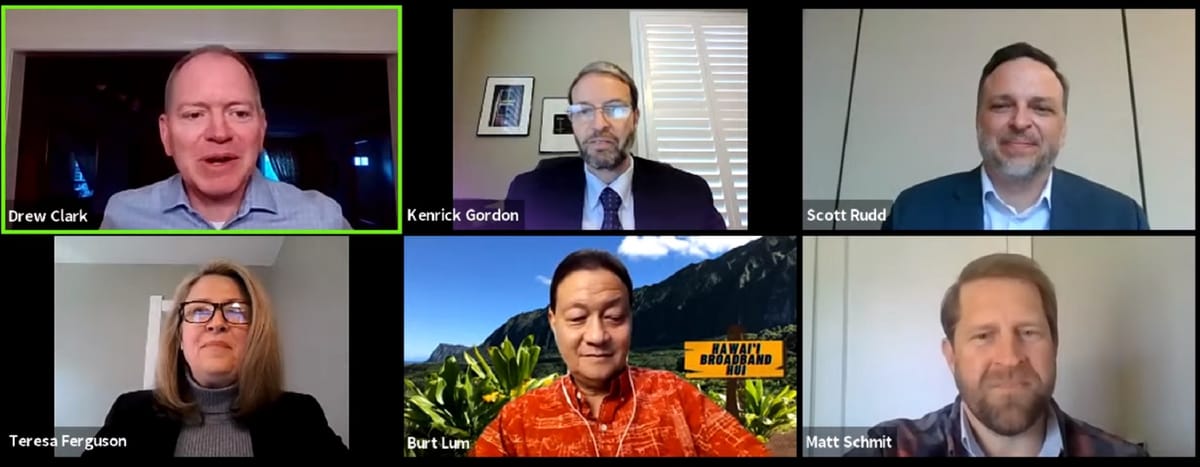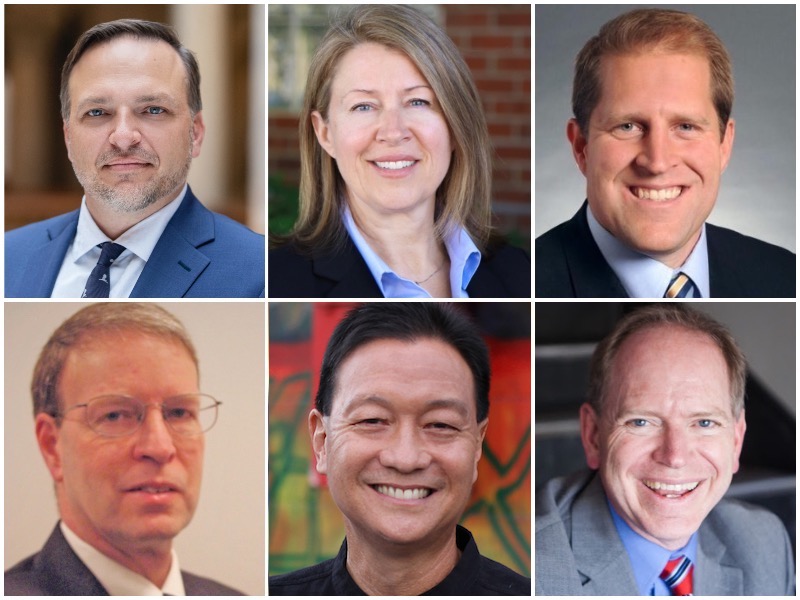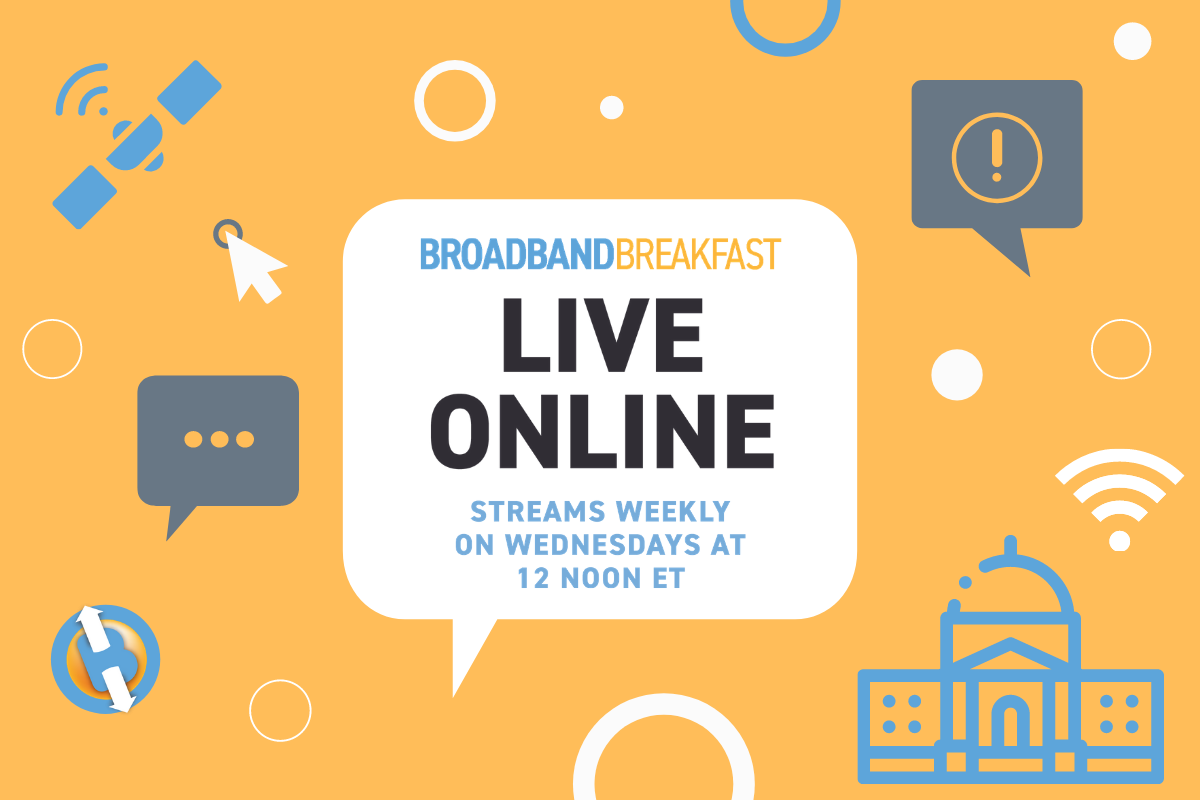State Broadband Authorities Play Crucial Role in Mapping, Planning and Educating for Digital Inclusion
April 2, 2021 – State broadband authorities working close to the ground say that the key to tackling the digital divide are states and local communities. Accurately mapping where broadband is available has been a challenge for many years, and the latest Federal Communications Commission effort is cr

April 2, 2021 – State broadband authorities working close to the ground say that the key to tackling the digital divide are states and local communities.
Accurately mapping where broadband is available has been a challenge for many years, and the latest Federal Communications Commission effort is creating a new “fabric” system that collects more granular data than the agency’s Form 477.
The Biden administration is looking at Congress making large funding investment in broadband. But the state broadband authorities speaking at Wednesday’s Broadband Breakfast Live Online event said that local efforts are essential to inform where funding is best used.
“Local communities may know better than anyone what is working and not working,” said Scott Rudd, director of broadband opportunities in Indiana’s Broadband Office.
Local communities provide central insight into broadband availability and use
Indiana encourages communities to engage their residents and businesses on the street level to find out what is happening in their neighborhood to get a better picture of who does or doesn’t get broadband, he said.
Colorado Broadband Office’s Teresa Ferguson said that the relationship with local communities was critical. The Colorado state geographic information system team works closely with local residents to crowdsource data to more accurately map broadband availability and to obtain consumer input. “We need to have that local voice to advocate for the community’s needs,” she said.
Matt Schmit, director for Illinois’ broadband office, stressed the value that the federal government can provide if broadband mapping is done correctly.
“Our federal partners, if they did it right, could really contribute to the overall effort in a really meaningful way,” he said. “A standardized kind of base or platform from which states and localities can innovate off of,” he said.
The key components to mapping are accuracy, timeliness and granularity, and combining those with “field validation survey work” and speed test data, he said.
Federal funding provides new opportunities to consider federal-state relationship
With so much federal funding being considered for broadband projects, Schmit said now is an opportunity to recalibrate state and federal cooperation.
“The states have proven their capability, they’ve got street cred now,” Ferguson said. States are very effective at implementing funding when they are given that leeway, as compared to one-size-fits-all funding solutions that aren’t always effective, she said.
The Connect America Fund and the recent Rural Digital Opportunity Fund reverse auctions are raising concerns for states because, under FCC rules, awardees do not need to completely build out for six years. That means some state residents may not see broadband for several years, she said.

Maryland’s strong county government structure means that the state relies heavily on county jurisdictions to provide availability data, said Rick Gordon, director of the Maryland governor’s rural broadband office. The state does not yet have a mapping program.
Maryland implemented two grant programs to subsidize building broadband out to unserved areas for service providers, Gordon said. They rely on local jurisdictions in which a local community is paired with a local providers to build the infrastructure.
State-led grassroots relationships and public-private partnerships
In Hawai’i, strategy officer Burt Lum explained that due to lacking of funding, the state began a grassroots effort through a Broadband Hui in 2020. (A “hui” means a group.)
The Broadband Hui is a collection of community stakeholders to find solutions for extending connectivity across the islands. They narrowed down their goals to access, literacy and livelihood, he said. He highlighted the need for better mapping and data gathering tools for Hawai’i.
In addition to better mapping tools, both Schmit and Lum emphasized digital literacy. “The pandemic has really shown a bright light on the fact that many populations in our state don’t have the digital literacy skills to take full advantage of the internet or the computers that they might have,” Schmit said.
Because so much of participation in society is digital, computer and digital literacy for residents are important, Lum said.
Even in solving these other problems, there is still a potential shortage of manpower and materials to actually build the broadband infrastructure. “Material and manpower are probably one of my biggest concerns right now,” Gordon said.
Gordon said that he had been discussing internship and apprenticeship options with electric companies that are branching into broadband. Further, in some rural areas, it’s almost impossible to find the skillset needed to build and operate these networks.
With federal funding coming, it may be difficult to meet the timelines set for that funding, he said. “While they’re trying to solve a problem, they’re creating a different problem,” he said.
Our Broadband Breakfast Live Online events take place every Wednesday at 12 Noon ET. You can watch the March 31, 2021, event on this page. You can also PARTICIPATE in the current Broadband Breakfast Live Online event. REGISTER HERE.

Wednesday, March 31, 2021, 12 Noon ET — “State Broadband Authorities“
- Under the American Recovery and Reinvestment Act of 2009, the U.S. Department of Commerce created the State Broadband Initiative. The partnership between state government officials, the National Telecommunications and Information Administration, and the Federal Communications Commission included an important component for state officials in broadband mapping. But State Broadband Initiatives did much more: They coordinated infrastructure investments, facilitated training and grants for digital literacy and digital inclusion, and helped raise consumer awareness about broadband. What’s the next chapter for state broadband authorities?
Panelists:
- Scott Rudd, Director of Broadband Opportunities, Indiana Broadband Office
- Teresa Ferguson, Director of Federal Broadband Engagement, Colorado Broadband Office (CBO)
- Matt Schmit, Director, Illinois Office of Broadband
- Kenrick Gordon, Director, Governor’s Office of Rural Broadband, Maryland
- Burt Lum, Strategy Officer, the Hawaii Broadband Initiative
- Drew Clark (moderator), Editor and Publisher, Broadband Breakfast

Scott Rudd currently serves as Director of Broadband Opportunities at the Indiana Broadband Office. He works closely with Indiana Office of Community and Rural Affairs on the Next Level Connections broadband grant program. Mr. Rudd has traveled to Washington D.C. to meet with federal legislators, learning more about the federal perspective of legislation regarding broadband and communicating Indiana’s strategy. Previously Mr. Rudd operated as the town manager and economic development director for the town of Nashville, Indiana, where he oversaw seven town commissions, three task forces, directed four departments and served as the town’s public information officer for four years. In that capacity, he also founded the Brown County Broadband Task Force to help steer the county’s broadband strategy and secured more than $20 million in private broadband investments to expand access to more than 7,500 homes and businesses in the area.
Teresa Ferguson is the Director, Federal Broadband Engagement for the Colorado Broadband Office (CBO). Prior to joining the CBO she worked for the Public Utilities Commissions of Missouri, Washington and Colorado where she held national leadership positions, engaging with the FCC, USAC, USDA and NARUC, advocating on behalf of state telecom & broadband policy interests. Ms. Ferguson spent 17 years in the private sector deploying broadband networks for schools & libraries and tribal nations funded through the federal E-Rate program.
Matt Schmit currently serves as Director of the Illinois Office of Broadband, where integration of 21st century infrastructure and service delivery is a primary focus of his work and research. He previously held office as a senator in his home state of Minnesota, and has served on many legislative boards on broadband deployment, transportation policy & investment, and community & economic development. In addition, Mr. Schmit has served on the Cook County Council on Digital Equity (CODE), the Agricultural Utilization Research Institute (AURI) board, the Blandin Broadband Strategies board, the St John’s University Board of Regents, and the Legislative Water Commission; represented Minnesota on the National Conference of State Legislators Nuclear Energy Work Group and Commerce Committee; and was an active member of the National Caucus of Environmental Legislators and State Ag and Rural Leaders.
Kenrick Gordon currently serves as Director of the Governor’s Office of Rural Broadband, where he oversees the expansion of broadband capabilities statewide to bring access to households and businesses in Maryland’s rural areas. He has over 30 years in engineering design and construction administration experience, beginning as a civil engineer working with municipalities on public works projects, then moving into commercial and industrial development. Mr. Gordon has also served at the U.S. Department of Agriculture as a General Field Representative for the USDA’s Rural Utilities Service Telecommunications Program.
Burt Lum is the State of Hawaii’s Strategy Officer for the Hawaii Broadband Initiative dedicated to digital equity and ensuring that Hawaii establishes robust, resilient, ubiquitous connectivity to the global broadband network. He was previously the Executive Director of Hawaii Open Data, a non-profit dedicated to advancing the principles of open data/knowledge in Hawaii, including policy work and community collaborations. He has more than 30 years in Hawaii’s technology and communications sector and is a frequent speaker and panelist on the topic of Information and Communication Technology (ICT).
Moderator Drew Clark, the Editor of Publisher of Broadband Breakfast, is also a telecommunications attorney at Marashlian & Donahue, PLLC, The CommLaw Group. Clark served as executive director of the Partnership for a Connected Illinois, the State Broadband Initiative in the land of Lincoln. PCI engaged in broadband mapping and planning, infrastructure investment, and digital literacy training. For more than a decade, Clark has been one of country’s leading voices advocating for improved broadband mapping efforts and a rational geospatial system for collecting broadband data.
Panelist Resources
- “State Broadband Authorities: The Next Chapter,” Kenrick Gordon, Maryland Governor’s Office of Rural Broadband
- “Hawaii Broadband,” Burt Lum, Hawaii Broadband Initiative
- Indiana Broadband Office
- Colorado Broadband Office
- Illinois Office of Broadband
- Maryland Governor’s Office of Rural Broadband
- Hawaii Broadband Initiative
- “Access, Literacy, and Livelihood: Broadband Hui Leverages Public and Private Collaborations to Support Digital Equity for All Hawaiian Residents,” Corian Zacher, Next Century Cities, March 31, 2021
WATCH HERE, or on YouTube, Twitter and Facebook.

As with all Broadband Breakfast Live Online events, the FREE webcasts will take place at 12 Noon ET on Wednesday.
SUBSCRIBE to the Broadband Breakfast YouTube channel. That way, you will be notified when events go live. Watch on YouTube, Twitter and Facebook.
See a complete list of upcoming and past Broadband Breakfast Live Online events.










Member discussion